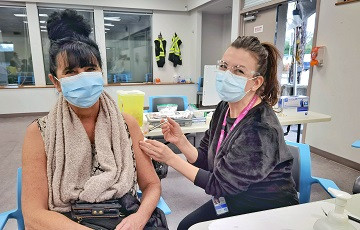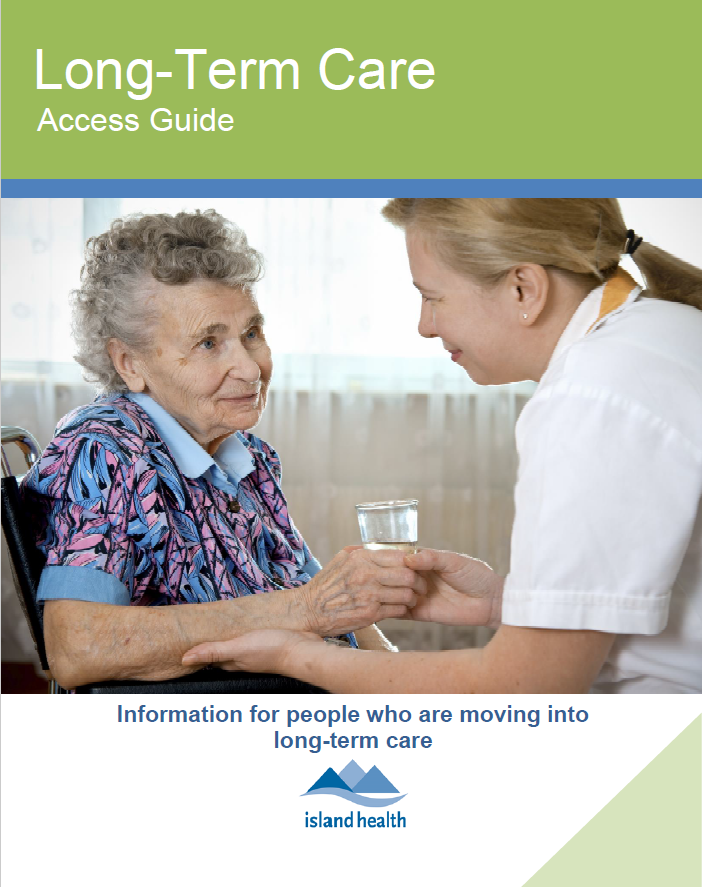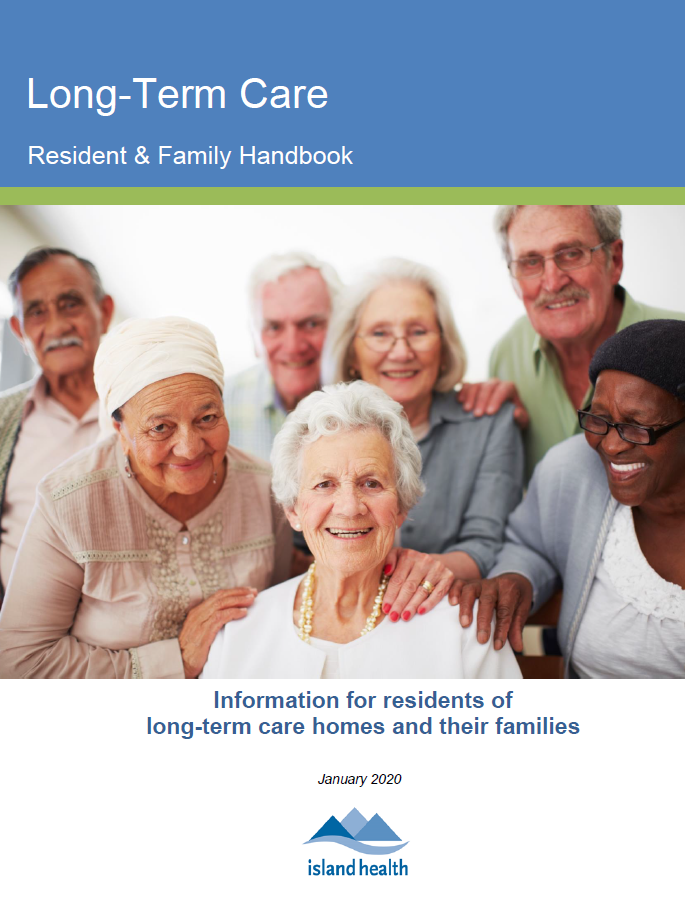COVID-19 Care Facility Admission Information
Protecting our most vulnerable residents and patients from the risk of transmission of COVID-19 is a top priority for Island Health. Residents of Assisted Living, Long-term care, and Respite are at a high risk of suffering severe outcomes due to COVID-19, and as such, there are isolation procedures in place for these settings. These policies have been designed in consultation with Island Health’s Medical Health Officer and the Provincial Health Officer.
About Long-Term Care
Long-Term Care homes provide 24-hour professional care and supervision to adults in a supportive and secure environment. Publicly subsidized Long-Term Care Services are available to adults with complex medical and cognitive care needs and an assessed and urgent need for 24-hour care. Services are aimed at meeting the complex health needs of those admitted to a care home and include:
- Accommodation
- 24-hour nursing care
- Other professional services such as nursing, physical therapy, social work and nutritional support
- Hospitality services (meals, housekeeping, recreational activity programs, emergency response)
- Personal care assistance
- End-of-life care.
Eligibility
Publicly subsidized long-term care is a limited resource, and placement in a long-term care facility is based on the urgency of the individual’s care needs.
You may be eligible if you meet citizenship and provincial residency Home and Community Care requirements and the criteria for admission to one of Island Health's long-term care homes. Island Health care management staff will determine your eligibility by conducting a thorough, standardized assessment of your need and urgency for long-term care.
Some of the eligibility factors we consider include:
- Your health and care needs
- Your family’s ability to provide care and support at home
- Whether community resources are appropriate, safe and sustainable for you.
What if I am not eligible for Long-Term Care?
There is a wide variety of publicly and privately funded community resources available to help you live independently if you are not eligible for long-term care placement. Some examples include home support services, bathing services, respite, adult day services and assisted living services. Your Community Case Manager will help identify appropriate services and resources that will meet your needs.
Who can I call if I have questions about this process?
If you are currently a patient in the hospital, contact the Liaison Case Manager covering your unit. If you are at home, contact your Community Case Manager or call a region contact on our Assisted Living & Long-Term Care Services page.
To help families and clients prepare for the transition to long-term care, please read the Island Health Long-Term Care Access Guide.
Selecting a Care Home
Client Choice
During the application process, you will have the opportunity to choose up to three preferred care homes. Your case manager will provide you with a list of care homes that are able to provide the type and level of care that you need. This list will be customized for you based on your specific care needs and the community or communities where you wish to live.
Learning About Care Homes
Take time to learn about the care homes on the list your case manager provides and select those you want to add to your preferred list. The Our Locations page provides full details, contact information, photographs and average wait times for each care home.
Preferred and Interim Care Homes
Whenever possible you will be offered a bed in a care home on your preferred list. It is up to you to decide which care homes you prefer, and you can change your preferences throughout the process if you wish.
However, if your situation is highly urgent, or if you are waiting in hospital or another facility and your preferred location is not available, you’ll be asked to consider an interim care home. Interim care homes are other care homes in your chosen community that can meet your care needs, but are not on your preferred list.
You can accept care in an interim care home until a bed is available in one of your preferred care homes. If you accept an offer of care and accommodation in an interim care home, your place will still be kept on the waiting list for your preferred care homes.
Waitlists and Wait Times
Your name will be added to the waiting list when your application for long-term care is approved and you have provided your case manager with the names of your preferred care home choices. This waiting list date will remain in effect until you receive an offer of care in one of your preferred care homes. If you accept an offer of care in an interim care home, you will retain your position on the waiting list for your preferred care home(s).
Current wait times for all care homes are available by visiting Our Locations. Wait times listed are averages and do vary depending on number of people waiting, size of care home, number of available beds, and situations requiring emergency admissions. Please review current wait times and use this information to inform your choices and care decisions.
Costs
Monthly long-term care rates are based on 80% of your after-tax income; minimum and maximum rates apply. The monthly rate contributes to the cost of providing the service.
The Ministry of Health allows homes to apply additional charges for optional services. This includes, but is not limited to, hairdressing, cable, and telephone services.
Services and charges may vary between settings. Home staff will inform you about these fees before you move in and must have your written consent.
For more information, please visit the Ministry of Health: Long-Term Residential Care page.
Family and Resident Councils
A Family or Resident Council is a group of persons who either live in a long-term care home or are family/representatives of residents. They work together with staff to maintain and enhance the quality of life of residents. They also provide a voice in decisions within the facility that affect them.
The Residents’ Bill of Rights
Island Health is committed to protecting the rights of the residents we care for. The BC Residents’ Bill of Rights is a set of rights for adults who live in long-term care homes, and details their rights to care; health, safety and dignity; participation and freedom of expression; and transparency and accountability.
The Residents’ Bill of Rights is publicly displayed inside all long-term care homes to remind residents, family members and facility license-holders of each person’s right to receive high quality care and live free from abuse and neglect.
If you are not satisfied with the care you receive, please speak to the home manager so your complaint can be addressed. If you continue to be dissatisfied, please contact our Patient Care Quality Office.
Compliments and Complaints
We are dedicated to providing the highest quality of care. This includes receiving feedback and responding to complaints. If you have comments about the care you are receiving, on what we have done well and what we need to improve, please let us know






